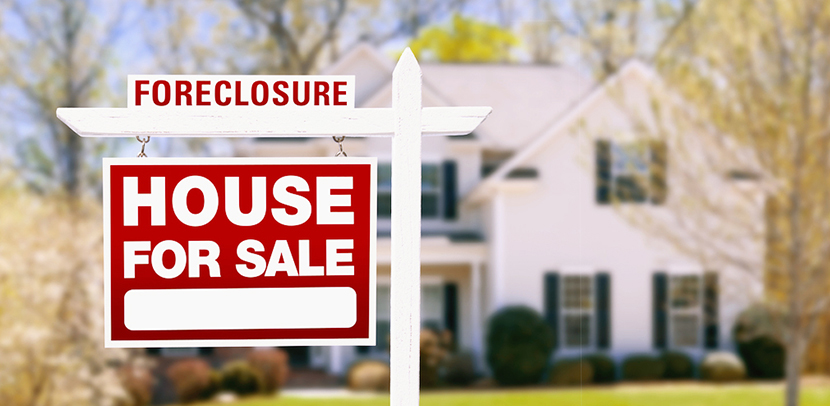
‘Zombie’ Foreclosures on the Rise

ATTOM Data Solutions, Irvine, Calif., said its third quarter Vacant Property and Zombie Foreclosure Report showed 1.5 million residential properties in the United States are vacant, representing 1.6 percent of all homes. Nearly 4 percent of these vacant homes face foreclosure—so-called “zombie foreclosures.”
The report (https://www.attomdata.com/solutions/marketing-lists/) said the count of properties in the process of foreclosure (215,886) in the third quarter is down 16 percent from the second quarter (258,024). But the percentage of those properties that have been abandoned as zombie foreclosures (7,961) is up from 3 percent in the second quarter.
Despite the increase, ATTOM Chief Product Officer Todd Teta said the the number of zombie foreclosure properties continue to represent just a tiny portion – one of every 12,500 homes – of the nation’s stock of 99.4 million residential properties.
The report said third-quarter data show a drop in the number of homes at some point in the foreclosure process, but an increase in the level sitting vacant at a time when the federal government is trying to shield the housing market from an economic slide stemming from the worldwide Coronavirus pandemic.
“Abandoned homes in foreclosure remain little more than a spot on the radar screen in most parts of the United States, posing few, if any, problems from neighborhood to neighborhood,” Teta said. “But the latest numbers do throw a small potential red flag into the air, given the increase in the percentage of zombie foreclosures.”
Key report data:
–7,961 residential properties facing possible foreclosure have been vacated by their owners nationwide in the third quarter, representing 3.7 percent, or one in 27, of all properties in the foreclosure process. Those numbers are up from 3 percent, or one in 34, in the second quarter and 3.2 percent, or one in 32, a year ago.
–States where zombie-foreclosure rates exceeding the national percentage are clustered in the Midwest and South, including Kansas (15 percent, or one in seven properties), Missouri (11.2 percent, or one in nine), Georgia (11 percent, or one in nine), Kentucky (10.7 percent, or one in nine) and Tennessee (10.3 percent, or one in 10). States where the rates fall below the national level are mainly in the Northeast and West, including Utah (1.1 percent, or one in 87 properties), Idaho (1.2 percent, or one in 84), New Jersey (1.6 percent, or one in 62), Colorado (1.8 percent, or one in 56) and California (2 percent, or one in 50).
–Zombie-foreclosure rates rose from the second to the third quarter in every state but Hawaii and the District of Columbia.
“It appears that an increased number of vacant foreclosure properties may be an unintended consequence of the foreclosure moratoria put in place by federal, state and local governments,” said Rick Sharga, executive vice president with RealtyTrac. “Vacant properties can contribute to neighborhood blight, and become safety hazards – especially during a pandemic. So the sooner these abandoned properties can be processed and sold to homebuyers or investors, the better it will be for communities and neighborhoods across the country.”
–New York continues to have the highest actual number of zombie properties (2,136), followed by Florida (1,028), Illinois (971), Ohio (887) and New Jersey (356).
California leads in the west, with 265, while Oklahoma leads in the South, with 133. States with the lowest ratios include Idaho (one in 188,805 properties), Utah (one in 98,766), Arkansas (one in 78,267), Texas (one in 70,746) and Virginia (one in 69,686).
Other high-level findings from third-quarter data:
–Among 158 metropolitan areas, the highest zombie-foreclosure rates include Peoria, Ill. (16.4 percent); Wichita, Kan.(15.3 percent); Kansas City, Mo. (13.4 percent); Omaha, Neb. (12.7 percent) and Cleveland, Ohio (12.6 percent).
–The highest levels of vacant investor-owned homes are in Indiana (8.5 percent), Kansas (6.8 percent), Ohio (6.5 percent), Rhode Island (6.3 percent) and Mississippi 6.1 percent).
–The highest overall vacancy rates for all residential properties remain in Kansas (2.7 percent), Mississippi (2.7 percent), Oklahoma (2.7 percent), Tennessee (2.6 percent) and Indiana (2.5 percent). The lowest are in New Hampshire (0.4 percent), Delaware (0.4 percent), Vermont (0.5 percent), Idaho (0.6 percent) and Colorado (0.8 percent).
